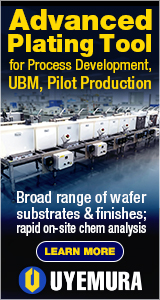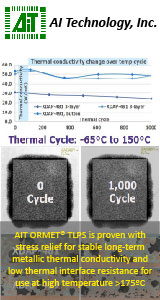|

|
|
| Ask the Experts | |||||||
|
|||||||
|
October 13, 2008 - Updated October 12, 2008 - Originally Posted Cause of Open BGA Solder JointsWe are seeing an unknown foreign substance around some PCB pads after surface mount soldering. These substances appear to be causing opens at BGA solder joints. How can we identify the composition of these foreign substances? How can we confirm where they came from? E. W. |
|||||||
| Expert Panel Responses | |||||||
|
Without a visual inspection of your printing processes or knowledge as to how you are cleaning your stencils it is difficult to pin point and correctly answer the problem. What you are describing sounds very much like an issue I have encountered in the past, and occurs when fiber debris is left on the stencil and transferred to the paste. Stencil aperture hole-walls are sharp and can act like a shredder if the stencil surface is being wiped with a non-approved stencil wipe. Paper towels, shop towels etc. will deposit shredded fiber into the aperture walls that will be transferred to the paste and subsequently onto the board. If this sounds like your practice, avoid further issues by using approved stencil wipes and utilize practices such as blowing off the stencil with compressed air to remove any remaining debris. Remember anything remaining on the stencil will transfer to the paste. If this is indeed the cause of foreign substances appearing around the PCB pad it will become immediately apparent, once you have made these simple changes.
President Integrated Ideas & Technologies, Inc. Mike Ray is founder and president of Integrated Ideas & Technologies, Inc., a manufacturer of SMT stencils. Mike Ray developed the first successful universal frame and holds patents on the AXIS laser system.
Localized extraction testing is one option. Foresite (an analytical laboratory in Indiana) provides both bulk and localized extraction testing. Using one of their localized extraction testers (C3), one may extract contamination from a very small area (0.1 in2). The extracted sample can then be subjected to ion chromatography for identification. One you identify the specific contamination, you will likely know its source.
President Aqueous Technologies Mr. Konrad has been in the electronic assembly equipment industry since 1985. He is founder and CEO of Aqueous Technologies Corporation, a manufacturer of automatic de-fluxing equipment, chemicals, and cleanliness testing systems.
|
|||||||
| Submit A Comment | |||||||
|
Comments are reviewed prior to posting. You must include your full name to have your comments posted. We will not post your email address. |
|
Free Newsletter Subscription
Circuitnet is built for professionals who bear the responsibility of looking ahead, imagining the future, and preparing for it. Insert Your Email Address |
|

|




